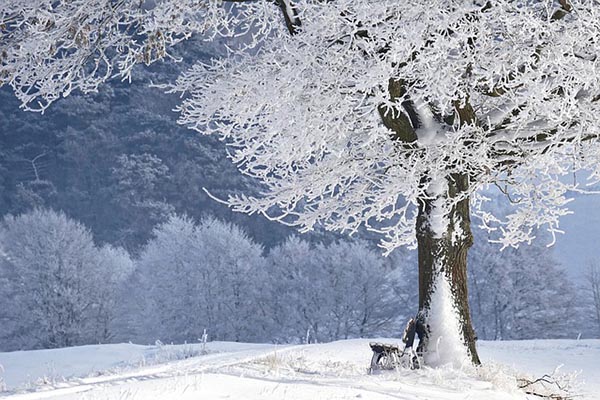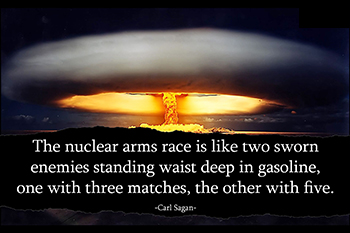Respect for the deceased
 Throughout my long span of years I have witnessed death and to this title I am writing about “what to do when death comes.” The entirety of this focuses on pets, livestock, and humans who will be in body, cared for and honored in spirit.
Throughout my long span of years I have witnessed death and to this title I am writing about “what to do when death comes.” The entirety of this focuses on pets, livestock, and humans who will be in body, cared for and honored in spirit.
“Daddy! Our canary has died”. This may be the first experience of death-your small bird, or maybe a goldfish had died. Most mothers and fathers will take the small body out to the backyard and with respect (to teach respect) bury the small body under a tree. The child has learned a valued lesson. Yet, there are other pets that die, usually a dog-they average about ten to twelve years or a cat, which averages about fifteen to twenty years of life. These family friends have contributed love and affection for you and the growing children; it is now time to pay respect.
I want to address “what to do”, from a country-rural view and also from a city-suburban view. First of all if you are living in the rural areas you will select a portion of your property that is quiet, secluded, free from flooding and not constantly trod upon. A pet cemetery is created as there will be more pets in time and they occupy space that in the beginning is close to the back door or flower bed, but in time the cemetery grounds are overcrowded-caving in and probably dug up by raccoons, feral dogs and denizens of the night.
The larger the animal, the deeper the gravesite. The first one to two feet of earth is hard to dig out but once down a bit it becomes softer and the grave is quickly dug. When one of my goats passed away I dug a four-foot deep X two-foot wide grave in about 45 minutes of labor. To dig a deep grave you are advised to dig in “steps”, standing on the top step, digging out the next step then reversing yourself and dig out the past step. This ladder effect will speed your task.
I have several dog burials, all big dogs. I had learned that a 4’ deep plot was ideal based on 30 years of observance. Shallow graves will collapse as the animal becomes one with natures ways and disintegrates. Then you must haul in wheelbarrows of soil and fill in the collapsed earth.
Larger animals such as horses will often die in the field pasture and they are impossible to move without a tractor. You will bury them where they fall. Horses and cows are best buried at about six feet. That is a lot of digging and already you can see the advantage of a tractor and backhoe. The law in this state requires that a large animal such as a cow be covered with earth at least 6 inches. Cows and horses” flatten out”, and insect activity of blow flies, carrion birds and of course raccoons quickly render to natures way. However your neighbors may challenge the last way, indeed being incomprehensible to their fastidious nose or political correctness. You might consider that the effluent run off into the creeks and hollows will cause an attraction for serious disease-therefore bury them deep.
Once the plot is dug out the animal will already be in rigor and stiff as a board. Bloating is quite noticeable. If you are forewarned about the impending demise of the animal, or you are forced to kill the animal in a merciful way, you can focus the animal to fall on a large piece of canvas, or plastic, allowing you do slide the body to face first the plot and then slide the animal forward, otherwise to roll the animal the feet will be straight up and an avenue for gasses to escape and attract digging wildlife.
Again you can understand that with big animals a tractor is necessary, or perhaps a team of horses. There are “estates” for sale that includes a 5-acre plot and these plots are adjacent to or inside the city limits. Within these “Horse Farm” estates the possibility of arranging for an animal control to come out and haul the carcass away may be an option.
Five acres is barely enough for a full-grown horse to graze out in the summer green Timothy fields period of growth. As the seasons change you will need winter barns and buy hay and feed. Horses eat more in the winter.
Contrary to modern views of child raising I have often explained the transition of life into death to numerous children-now all grown and not psychopaths. Living history alone demonstrates the usage of the carcass for mans use i.e.: hide, bones, fat and meat. We must remain grateful for 10,000 years of experience. During World War II I recall eating horsemeat.
When you take your deceased or dying smaller animal to the veterinarian he will, at your request, dispose of the body. This is not burial unless there is a pet cemetery near by and you pay for the service. Your pet cat, dog, baby goat or other animal including horses and cows are gathered up along with “road kill” and sent to a rendering facility that chops and grinds them up and cooks them down into mush. Then it is poured into cans. The mush in dog and cat food suggests on the bag, or can, a picture of a wolf, a happy cat, or other wild animal you fantasize your Chihuahua is. Bon Appetite.
What is reality is that 7.6 million dogs and cats wind up in animal shelters and 2.7 million are killed…and sent to rendering plants. Where do you think all these carcasses go, to the happy burial ground? No they are processed along with the hair, hide, feet, dog flea collars and lost memories. Type in your questions on this subject to Google.
Our last subject is disposal of GrandMa’s remains in our next article. Her spirit may be in Heaven, but where do the mortal remains wind up?
God Bless the Family Friends and may God protect them from homelessness, cruelty, puppy farms, and the evils so commonly found with pets. A good TV shows to watch is: Animal Planet who hosts in the morning hours Houston Animal Control.
Support your local NO KILL SHELTER.
Old Timer
COPYRIGHT: Back2theLand.com all rights reserved. 9/4/2016



